Sculpting with Topiary: A Beginner's Guide
Welcome to the enchanting world of topiary, where nature meets artistry! If you've ever strolled through a garden and marveled at the intricately shaped greenery, you might have felt a spark of inspiration to try your hand at this beautiful craft. Topiary is not just about cutting and shaping plants; it's about creating living sculptures that can transform your outdoor spaces into magical landscapes. In this guide, we'll explore everything you need to know to get started, from the history of topiary to choosing the right plants, shaping techniques, and design ideas that will make your garden the talk of the town.
The art of topiary has roots that stretch back to ancient civilizations, where it was used to create stunning gardens that showcased the skill and creativity of the gardener. Imagine walking through a Roman villa, surrounded by perfectly trimmed hedges and fantastical shapes that captivate the eye. This tradition has evolved over centuries, influencing landscaping trends and inspiring countless gardeners to embrace this unique form of expression. Today, topiary remains a popular choice for those looking to add a touch of whimsy and elegance to their gardens.
As you embark on your topiary journey, you'll discover that the right plant selection is crucial for success. Not all plants are created equal when it comes to shaping, and understanding which species thrive in your climate will make all the difference. From the classic boxwood to the versatile holly, there are numerous options to choose from, each with its own unique characteristics. We'll delve into the best plants for topiary, their growth habits, and how to care for them so that your sculptures flourish.
Shaping your plants into stunning forms is where the real magic happens. Whether you're aiming for simple geometric shapes or more intricate designs, mastering the techniques of trimming, training, and wiring will elevate your topiary skills. It's like sculpting with clay, but instead, you're working with living material that grows and changes. With the right tools and a bit of practice, you'll be able to create breathtaking pieces that will leave your friends and family in awe.
Incorporating topiary into your garden design can be a delightful adventure. From formal gardens that exude sophistication to whimsical arrangements that spark joy, the possibilities are endless. Imagine a perfectly manicured hedge lining your pathway or a playful animal shape nestled among your flowers. These elements not only enhance the visual interest of your outdoor space but also provide a sense of personality and charm that reflects your unique style.
As a beginner, it's essential to avoid common pitfalls that can hinder your topiary journey. Over-pruning and choosing the wrong plants can lead to frustration and disappointment. But fear not! With the right knowledge and a little guidance, you can navigate these challenges and create stunning green sculptures that thrive in your garden.
So, are you ready to dive into the world of topiary? Grab your gardening gloves, sharpen your shears, and let’s get started on this exciting journey of sculpting with nature!
- What is topiary? Topiary is the art of shaping plants into decorative forms, often resembling animals or geometric shapes.
- What plants are best for topiary? Popular choices include boxwood, holly, and yew, as they respond well to shaping and maintain their form.
- How often should I prune my topiary? Regular pruning is essential, typically every few weeks during the growing season, to maintain shape and health.
- Can I use native plants for topiary? Absolutely! Native plants can enhance biodiversity while providing unique shapes and textures.
- What tools do I need for topiary? Basic tools include shears, pruners, and gloves, while specialized tools like topiary frames can help achieve precise shapes.

The History of Topiary
Topiary, the art of shaping plants into decorative forms, has a rich and fascinating history that stretches back thousands of years. Its origins can be traced to ancient Rome, where it was first used to create lush green sculptures that adorned gardens of the wealthy. The Romans were known for their love of nature and beauty, and they took great pride in cultivating elaborate gardens filled with geometrically shaped shrubs and trees. This practice not only showcased their horticultural skills but also served as a symbol of status and sophistication.
As time progressed, topiary evolved and spread throughout Europe, particularly during the Renaissance period. This era saw a renewed interest in classical art and architecture, and gardens began to reflect these ideals. Topiary became a prominent feature in the grand estates of the nobility, with intricate designs that included animals, mythical creatures, and even geometric shapes. The meticulous care required for these living sculptures demonstrated the gardener's artistry and dedication.
By the 17th and 18th centuries, topiary had firmly established itself as a key element of formal garden design. The French and English gardens of this time often featured extensive topiary arrangements, with hedges trimmed into elaborate shapes that created a sense of order and symmetry. The gardens of Versailles, for example, are famous for their stunning topiary displays, which were meticulously crafted to enhance the grandeur of the estate.
In the 19th century, the popularity of topiary began to wane as gardening trends shifted towards more naturalistic styles, embracing a less structured approach to landscape design. However, the 20th century saw a resurgence of interest in topiary, particularly in the mid-century modern movement, where clean lines and geometric shapes were celebrated. Gardeners began experimenting with a variety of plant species and innovative shaping techniques, leading to a new wave of creativity in topiary design.
Today, topiary remains a beloved art form, captivating gardeners and landscape enthusiasts alike. It has transcended its historical roots to become a versatile element in contemporary garden design. From whimsical animal shapes to elegant spirals, topiary can be found in gardens of all sizes, adding a touch of charm and personality to outdoor spaces. Whether you’re strolling through a historic estate or admiring a neighbor's garden, the beauty of topiary continues to inspire and delight.
- What is topiary? Topiary is the art of shaping trees and shrubs into decorative forms, often resembling animals or geometric shapes.
- Where did topiary originate? Topiary originated in ancient Rome, where it was used to create ornamental gardens for the wealthy.
- Is topiary difficult to maintain? While it requires regular trimming and care, with the right techniques and plant choices, topiary can be manageable for beginners.
- What plants are best for topiary? Popular plants for topiary include boxwood, yew, and holly due to their dense foliage and ability to hold shapes well.
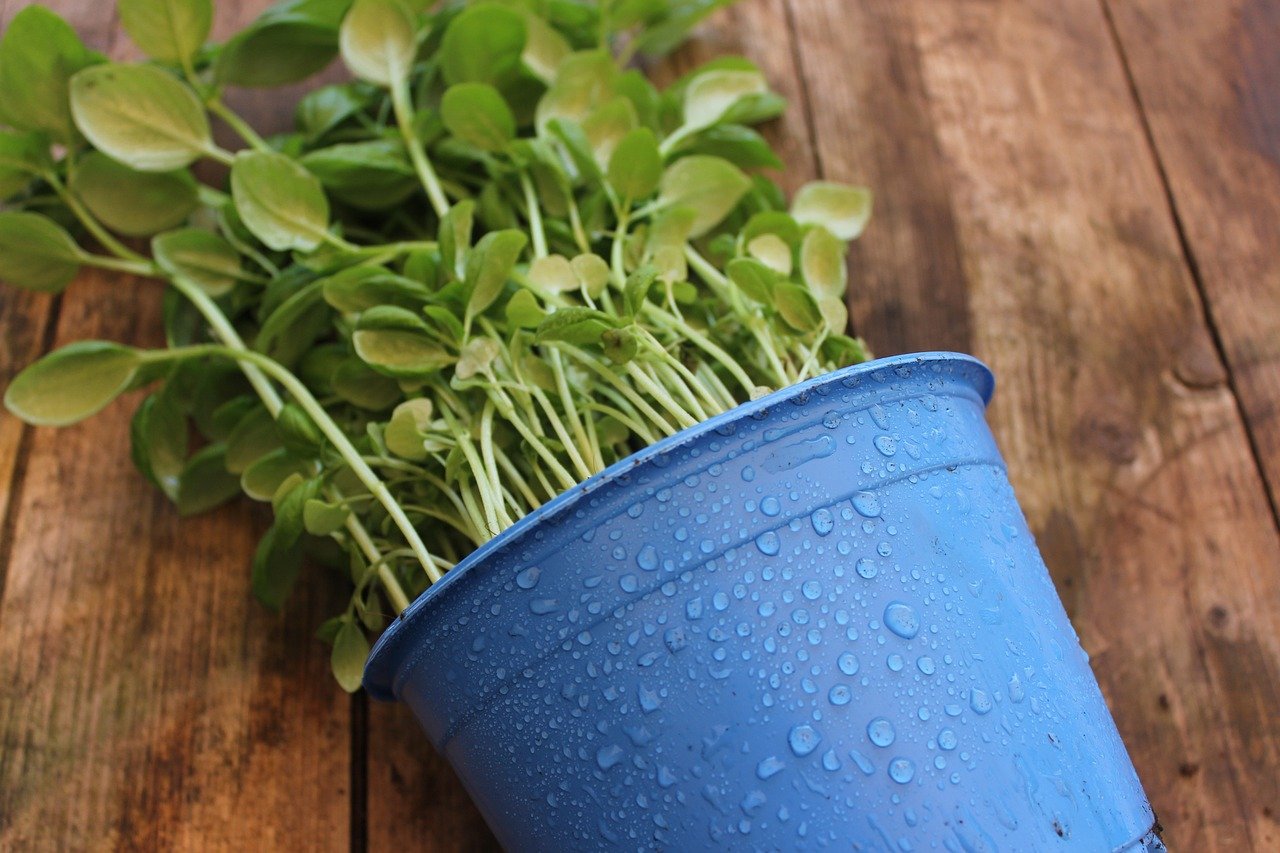
Choosing the Right Plants
When it comes to topiary, selecting the right plants is crucial for creating stunning green sculptures that will thrive in your garden. The choice of plants can significantly affect the overall look and health of your topiary creations. It's essential to consider factors such as growth habits, climate adaptability, and maintenance needs to ensure your sculptures remain vibrant and aesthetically pleasing. So, what should you look for when choosing plants for your topiary? Let's dive in!
First off, you need to think about the growth habits of the plants you're considering. Some plants grow quickly and can be shaped easily, while others may take longer to reach the desired size. For beginners, it's often best to start with species that are known for their ease of shaping and maintenance. Additionally, consider the climate in which you live. Not all plants thrive in every environment, so choose species that are well-suited to your local conditions.
Here are some popular plants that are commonly used in topiary:
- Boxwood: This evergreen is a classic choice for topiary due to its dense foliage and ability to withstand heavy pruning.
- Holly: Known for its glossy leaves and bright berries, holly can add a festive touch to your garden.
- Yew: With its soft needles and flexible branches, yew is another excellent option for creating intricate shapes.
Now, let’s break down the types of plants you might consider:
| Plant Type | Characteristics | Best Climate |
|---|---|---|
| Boxwood | Dense, evergreen foliage; easy to shape | Temperate |
| Holly | Glossy leaves; vibrant berries | Temperate to subtropical |
| Yew | Soft needles; flexible branches | Temperate |
Another consideration is whether to use evergreen or deciduous plants. Evergreen plants maintain their foliage year-round, providing consistent structure and color. On the other hand, deciduous plants lose their leaves in winter, which can create a different look in your garden during the colder months. Each type offers unique advantages, so think about the overall aesthetic you want to achieve.
Moreover, using native plants can be a fantastic way to enhance local biodiversity while still achieving beautiful topiary shapes. Native plants are often more resilient and require less maintenance, making them a practical choice for beginners. They can also blend seamlessly into your garden, creating a natural look that complements the surrounding landscape.
As you embark on your topiary journey, remember that the right plant selection can set the foundation for your success. Take your time to research and choose wisely, as these living sculptures will be a part of your garden for years to come. With the right plants, you'll be well on your way to creating breathtaking topiary that will impress your friends and family!
Q: What are the best plants for beginners in topiary?
A: Boxwood, holly, and yew are excellent choices for beginners due to their ease of shaping and maintenance.
Q: Can I use flowering plants for topiary?
A: While flowering plants can be used, they may not hold their shape as well as evergreen plants. It's best to choose plants that have dense foliage for effective topiary.
Q: How do I know if a plant is suitable for my climate?
A: Research the hardiness zone of the plant and compare it to your local climate conditions to ensure compatibility.

Common Topiary Plants
When it comes to creating stunning topiary sculptures, the choice of plants is absolutely crucial. Not all plants are suited for shaping and sculpting, and understanding which species work best can make all the difference in your topiary journey. Among the most popular choices are boxwood, holly, and yew. Each of these plants offers unique characteristics that lend themselves beautifully to the art of topiary.
Boxwood, for instance, is a classic choice for topiary enthusiasts. Its dense foliage and ability to withstand heavy pruning make it an ideal candidate for creating intricate shapes. Boxwood also thrives in a variety of climates, making it accessible to gardeners across different regions. Whether you're looking to create a simple geometric form or a more elaborate design, boxwood can adapt to your vision.
Holly, on the other hand, brings a touch of seasonal flair to your topiary creations. With its glossy leaves and vibrant berries, holly can add a pop of color to your garden, particularly in winter. This evergreen plant not only holds its shape well but also provides a unique texture that can enhance the overall aesthetic of your topiary. Just imagine a holly topiary shaped like a whimsical animal, standing proudly in your garden, inviting compliments from every visitor!
Then there's yew, another fantastic option for topiary. Known for its rich, dark green foliage, yew is a versatile plant that can be shaped into various forms, from spirals to cones. Its slow growth rate means that once you’ve shaped it, you won’t have to constantly trim it back, giving you more time to enjoy your creation rather than maintain it. However, it’s important to note that yew is toxic if ingested, so be cautious if you have pets or small children.
In addition to these popular choices, there are many other plants that can be utilized for topiary, including:
- Privet: Fast-growing and easy to shape, perfect for beginners.
- Rosemary: A fragrant option that adds sensory appeal.
- Lavender: Offers both beauty and a delightful scent.
Choosing the right plant for your topiary project will depend on a variety of factors, including your local climate, the amount of sunlight your garden receives, and your personal design goals. Each plant has its own growth habits and care requirements, so it's essential to do your research before diving in. For instance, while boxwood thrives in full sun to partial shade, holly prefers a bit more shade to maintain its vibrant color. Understanding these nuances will help you create a thriving topiary garden that remains visually stunning year-round.
Ultimately, the world of topiary is as diverse as the plants you can choose from. By selecting the right species, you can create breathtaking sculptures that not only enhance your garden's beauty but also reflect your personal style. So, as you embark on your topiary adventure, keep these common plants in mind, and let your creativity flourish!
Q: Can I use any plant for topiary?
A: While many plants can be shaped, not all are suitable for topiary. It's best to choose dense, evergreen species that can withstand pruning.
Q: How often should I prune my topiary plants?
A: Pruning frequency depends on the plant species and the desired shape. Generally, light pruning can be done every few weeks during the growing season.
Q: Are there any plants I should avoid for topiary?
A: Yes, avoid plants that have weak growth habits or are prone to disease. Plants like certain flowering shrubs may not hold their shape well.

Evergreen vs. Deciduous
When it comes to topiary, understanding the distinction between evergreen and deciduous plants is essential for creating lasting and visually appealing sculptures in your garden. Evergreens, as the name suggests, maintain their foliage year-round, providing a consistent backdrop for your topiary designs. This characteristic makes them particularly popular among gardeners who desire a reliable and lush appearance throughout the seasons. Common examples of evergreen plants used in topiary include boxwood, yew, and holly, each offering dense foliage that can be shaped into intricate forms.
On the other hand, deciduous plants shed their leaves annually, leading to a more dynamic visual experience as their appearance changes with the seasons. While they may not provide the same year-round coverage, they often boast vibrant blooms and colorful foliage in spring and fall, which can add a unique twist to your topiary creations. Some popular deciduous plants for topiary include certain varieties of maple and beech. However, gardeners should be mindful of the seasonal changes and plan their designs accordingly to ensure that the absence of leaves in winter does not detract from the overall aesthetic.
Here’s a quick comparison to help you understand the differences between these two types of plants:
| Feature | Evergreen Plants | Deciduous Plants |
|---|---|---|
| Foliage | Retains leaves year-round | Sheds leaves annually |
| Visual Consistency | Provides constant greenery | Changes appearance with seasons |
| Maintenance | Less frequent pruning needed | Requires more attention during leaf drop |
| Examples | Boxwood, Yew, Holly | Maple, Beech, Hornbeam |
Ultimately, the choice between evergreen and deciduous plants for your topiary depends on your personal preferences and the specific design goals you have in mind. If you desire a structured and uniform look, evergreens may be your best bet. However, if you want to embrace the changing seasons and add a splash of color throughout the year, incorporating deciduous plants can create an engaging and dynamic landscape. Whichever you choose, understanding their unique characteristics will help you craft stunning topiary sculptures that captivate and inspire.
- What is the best time to prune topiary plants? Generally, the best time to prune topiary plants is in late winter or early spring before new growth begins. This timing allows for healthy regrowth and maintains the desired shape.
- Can I use flowering plants for topiary? Yes, flowering plants can be used for topiary, but it's essential to choose varieties that can withstand regular pruning and shaping.
- How often should I water my topiary plants? Watering needs vary based on the plant type and climate, but a general rule is to keep the soil consistently moist without overwatering.
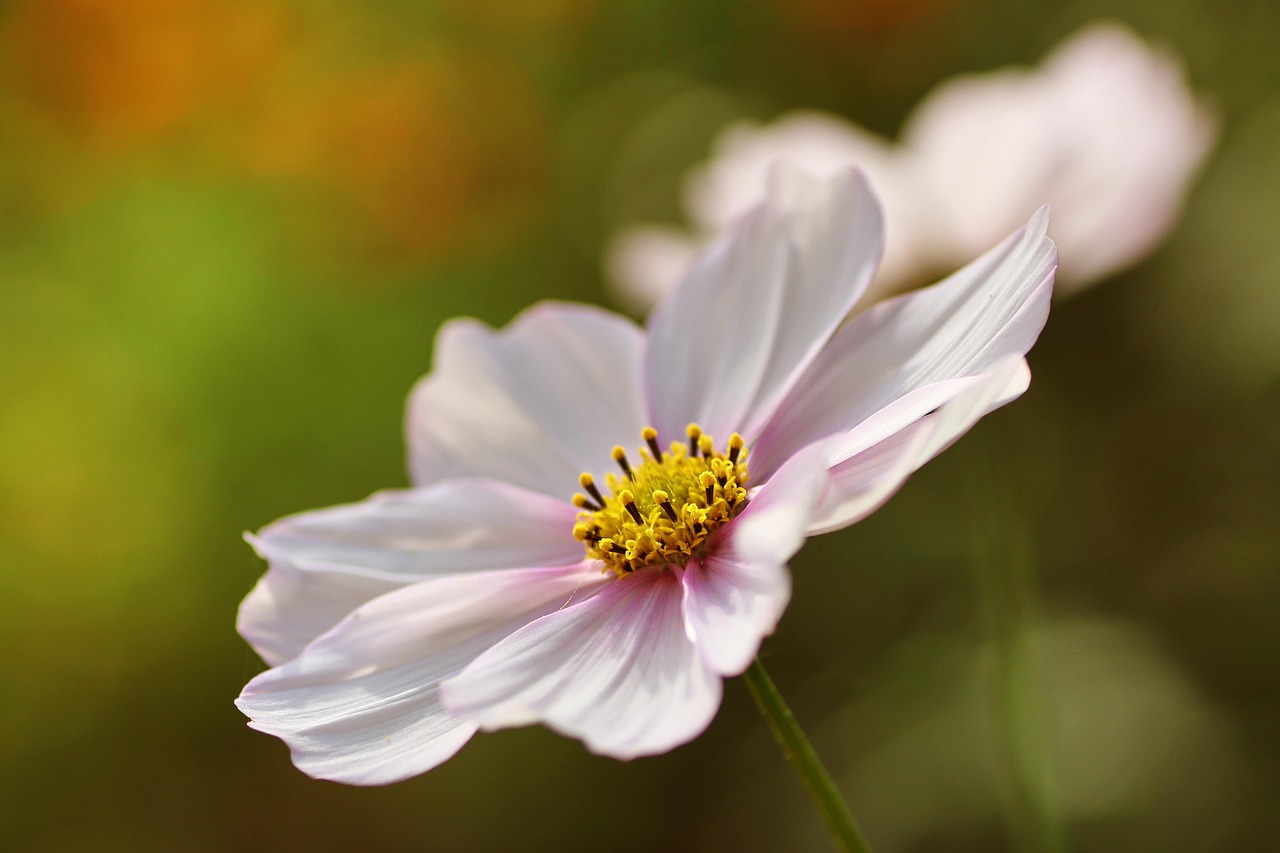
Native Plants for Topiary
When it comes to creating stunning topiary sculptures, using native plants can offer a multitude of benefits that go beyond aesthetics. Native plants are those that have evolved in a specific region over time, adapting to the local climate, soil, and wildlife. By incorporating these plants into your topiary designs, you're not only enhancing the beauty of your garden but also contributing to local biodiversity.
One of the most significant advantages of using native plants for topiary is their low maintenance requirements. Since these plants are well-suited to their environment, they typically require less water, fewer fertilizers, and minimal pest control compared to non-native species. This means you can spend more time enjoying your garden and less time worrying about upkeep. For instance, consider using native shrubs like Eastern Red Cedar or American Holly, both of which can be shaped into beautiful forms while thriving in their natural habitat.
Another compelling reason to choose native plants is their ability to support local wildlife. Birds, butterflies, and beneficial insects rely on native flora for food and shelter. By integrating these plants into your topiary, you create a habitat that attracts and sustains these creatures. Imagine a garden where your carefully sculpted boxwood topiary is complemented by native flowering plants that draw in pollinators, creating a vibrant ecosystem right in your backyard.
When selecting native plants for your topiary projects, it's essential to consider their growth habits and how they can be shaped. Some native species may have a naturally bushy growth pattern, making them ideal candidates for topiary. For example, Mountain Laurel and Serviceberry can be pruned and shaped into delightful forms, adding a unique touch to your garden design. It's also crucial to consider the climate and soil conditions in your area, as these factors will influence the success of your topiary creations.
In summary, choosing native plants for your topiary not only enhances the aesthetic appeal of your garden but also promotes ecological balance and sustainability. By selecting species that thrive in your local environment, you can create stunning green sculptures that require less maintenance and support local wildlife. So, as you embark on your topiary journey, consider the beauty and benefits of going native!
- What are the best native plants for topiary? Popular choices include Eastern Red Cedar, American Holly, and Mountain Laurel, which can be shaped easily and thrive in their native environments.
- How do native plants benefit the environment? They support local wildlife, require less maintenance, and help maintain the ecological balance of the area.
- Can I use native plants in a formal garden design? Absolutely! Native plants can be shaped into elegant forms that complement formal garden layouts while enhancing biodiversity.
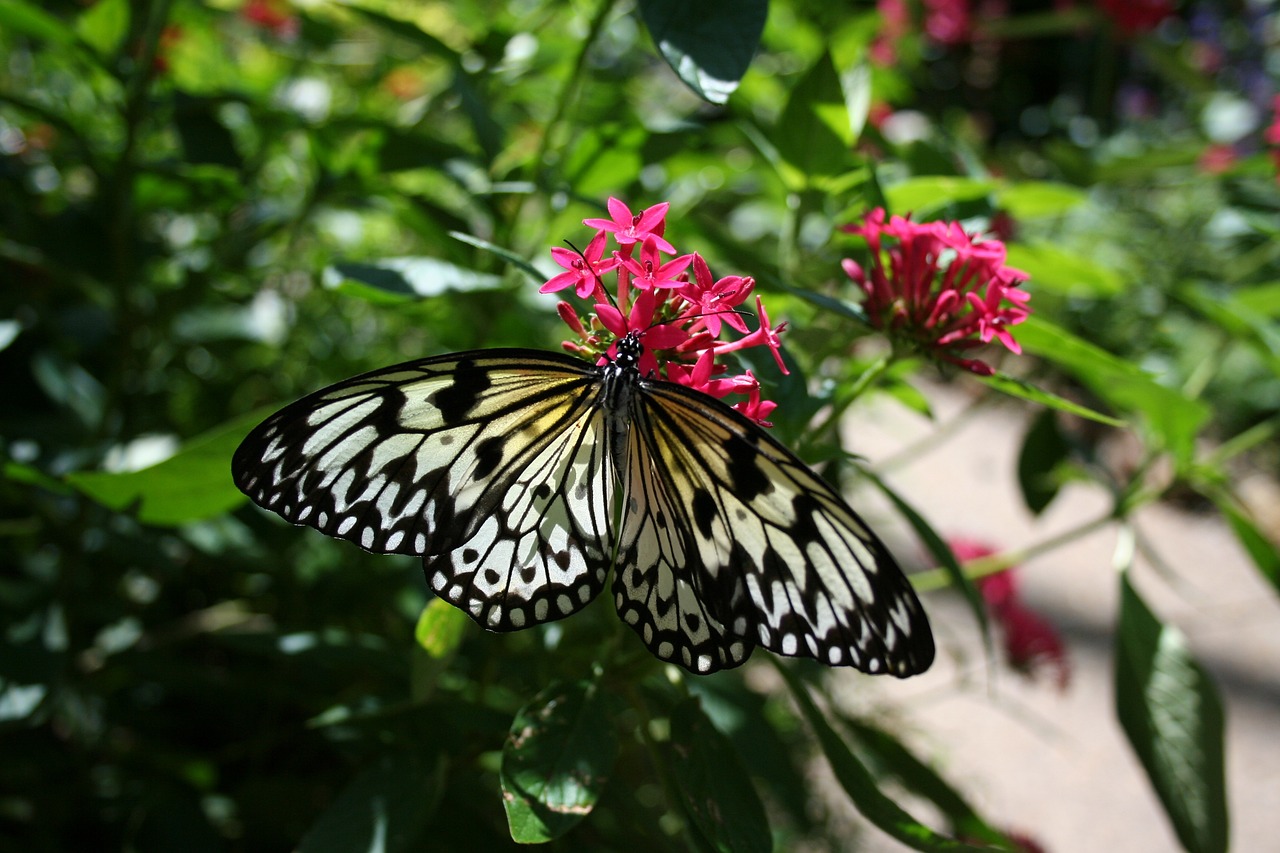
Planting and Maintenance Techniques
When it comes to planting and maintaining topiary, the key is to establish a solid foundation that encourages healthy growth. This means starting with the right soil, ensuring proper spacing, and understanding the specific needs of your chosen plants. First and foremost, soil preparation is crucial. You want to create a rich, well-draining environment that allows roots to spread and absorb nutrients. Consider mixing in organic compost or well-rotted manure to enhance soil fertility. A pH level between 6.0 and 7.0 is generally ideal for most topiary plants.
Next, let’s talk about spacing. This is often overlooked by beginners, but it’s essential for the longevity of your topiary sculptures. When planting, give each plant enough room to grow without crowding its neighbors. A good rule of thumb is to space them out according to their mature size. For example, if you're planting boxwood, aim for about 2 to 3 feet apart, depending on the variety. This spacing not only promotes healthy growth but also makes maintenance much easier.
Watering is another critical aspect of topiary care. Newly planted topiary needs consistent moisture to establish roots. However, be careful not to overwater; soggy soil can lead to root rot. A simple way to check is to stick your finger into the soil about an inch deep. If it feels dry, it’s time to water. Once your plants are established, you can reduce the frequency, but they still need regular hydration, especially during dry spells.
Fertilization is equally important. Using a balanced, slow-release fertilizer during the growing season can provide the necessary nutrients for your topiary to thrive. Look for fertilizers with equal parts nitrogen, phosphorus, and potassium, often labeled as NPK 10-10-10. Follow the instructions on the package for application rates, as over-fertilizing can be just as harmful as under-fertilizing.
Finally, let’s not forget about pruning. Regular trimming helps maintain the desired shape and promotes bushier growth. When pruning, it’s best to use sharp shears to make clean cuts, minimizing damage to the plant. Aim to prune during the growing season, typically in spring or early summer, when the plants are actively growing. This will not only help maintain your topiary's shape but also encourage new growth, resulting in denser foliage.
In summary, successful planting and maintenance of topiary involve:
- Soil Preparation: Use rich, well-draining soil.
- Proper Spacing: Allow sufficient room for growth.
- Consistent Watering: Keep soil moist but not soggy.
- Regular Fertilization: Use balanced fertilizers during the growing season.
- Pruning: Trim regularly to maintain shape and promote bushiness.
By paying attention to these essential techniques, you’ll set the stage for creating stunning topiary sculptures that can transform your garden into a breathtaking landscape.
Q: How often should I water my topiary plants?
A: Watering frequency depends on the climate and soil conditions, but generally, newly planted topiary needs consistent moisture. Check the soil regularly and water when it feels dry about an inch down.
Q: What is the best time to prune topiary plants?
A: The best time to prune is during the growing season, typically in spring or early summer. This encourages new growth and helps maintain the desired shape.
Q: Can I use any plant for topiary?
A: Not all plants are suitable for topiary. Look for species that have dense foliage and can withstand regular pruning, such as boxwood, holly, and yew.
Q: How do I know if my topiary needs fertilizer?
A: If your plants appear to be growing slowly or have pale leaves, it may be time to fertilize. Regular feeding during the growing season can help promote healthy growth.
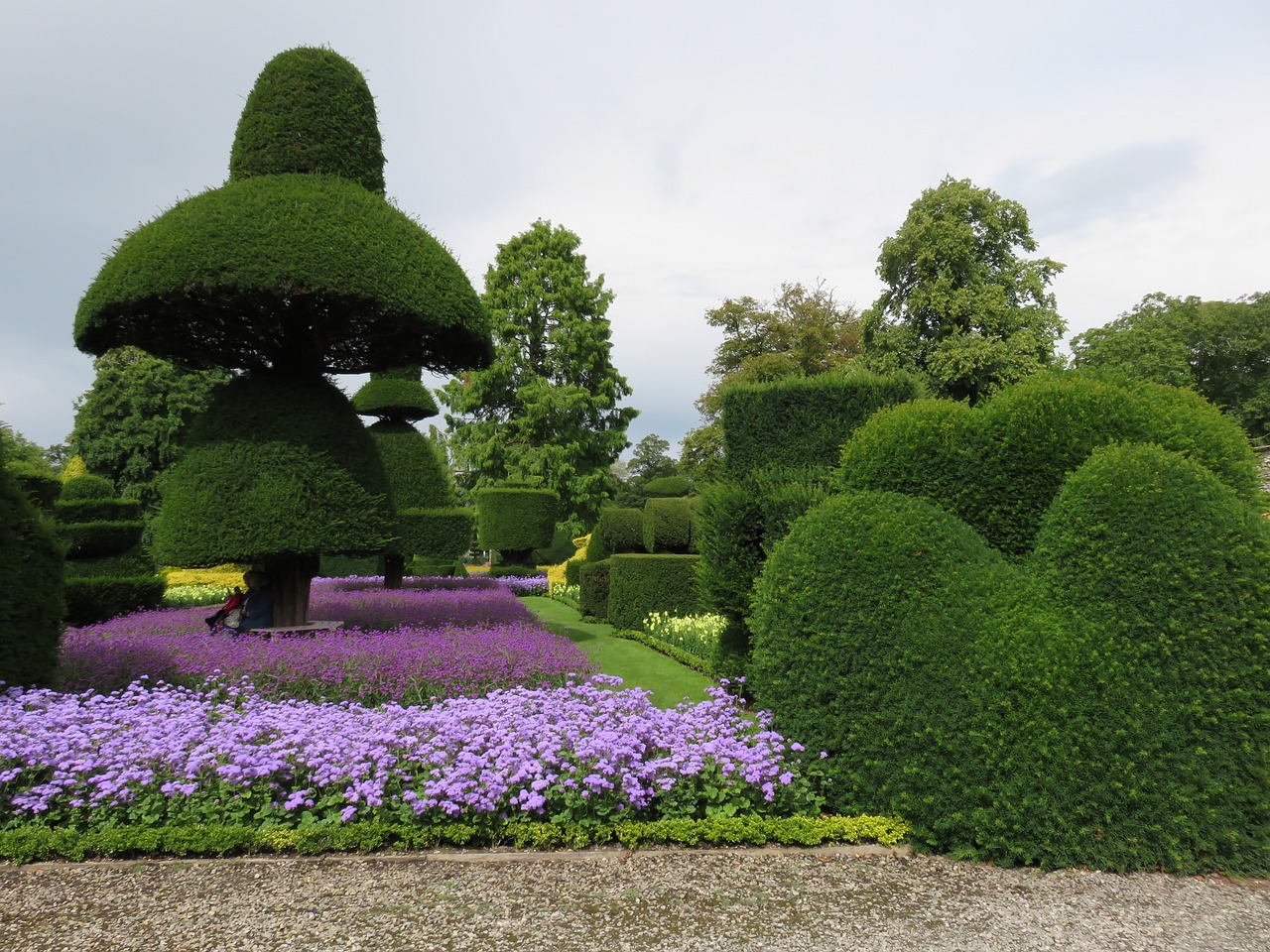
Shaping Techniques
The art of topiary is not just about planting; it's a meticulous process that involves shaping plants into stunning sculptures. Whether you're a novice or a seasoned gardener, understanding various shaping techniques can elevate your topiary game. Imagine transforming a simple shrub into a majestic animal or an abstract form that captures the eye. This transformation is achieved through a combination of trimming, training, and the use of specialized tools. Each technique plays a crucial role in ensuring that your green creations remain visually appealing and healthy.
One of the fundamental techniques in topiary is trimming. This involves using shears or clippers to cut back foliage and shape the plant. Regular trimming encourages dense growth, which is essential for achieving those crisp lines and well-defined shapes. It's like giving your plant a haircut; the more you trim, the more it grows back beautifully. However, timing is everything! The best time to trim your topiary is during the growing season, typically in late spring or early summer. This allows the plant to recover quickly and maintain its shape throughout the season.
Another important aspect of shaping is training. This technique involves guiding the growth of the plant into the desired shape using various methods. For instance, you might use stakes or wires to direct branches as they grow. This is particularly useful for creating intricate designs or larger sculptures. It's akin to teaching a child to play an instrument; with patience and guidance, they can master complex melodies. Similarly, with consistent training, your plants can achieve remarkable forms.
For those looking to take their topiary skills to the next level, advanced shaping techniques come into play. These include layering and creating intricate designs that require a keen eye and steady hands. Layering involves cutting back certain sections of the plant more than others, creating a tiered effect that adds depth and dimension. Think of it as sculpting a cake; each layer adds to the overall aesthetic, making it more appealing. Additionally, intricate designs often require the use of specialized tools, such as topiary frames, which can help maintain symmetry and precision.
As you embark on your topiary journey, keep in mind that the tools you use can significantly impact your shaping process. Basic gardening tools like shears, pruners, and gloves are essential, but investing in specialized topiary tools can make a world of difference. These tools are designed specifically for shaping and can help you achieve more detailed and refined results. For instance, a topiary frame can serve as a guide, ensuring that your plant grows into the desired shape without the guesswork.
In conclusion, mastering shaping techniques in topiary is a blend of art and science. By understanding the fundamentals of trimming, training, and utilizing the right tools, you can create breathtaking green sculptures that will be the envy of your neighborhood. So grab your shears, unleash your creativity, and let your garden become a canvas for your topiary masterpieces!
- What is the best time to shape my topiary plants? The best time to shape your topiary is during the growing season, usually in late spring or early summer.
- Can I use any plant for topiary? Not all plants are suitable for topiary. It's essential to choose species that respond well to pruning and shaping.
- How often should I trim my topiary? Regular trimming is recommended, typically every few weeks during the growing season, to maintain shape and encourage dense foliage.
- Do I need special tools for topiary? While basic gardening tools are sufficient, specialized topiary tools can help achieve more intricate designs and precise shapes.

Basic Shaping Methods
When it comes to creating stunning topiary, understanding is essential. These techniques not only help you achieve the desired forms but also ensure that your green sculptures remain healthy and vibrant. The primary tools you'll need for these methods are shears and clippers, which allow you to trim and shape your plants effectively. But before diving into the hands-on work, it’s crucial to have a vision of what you want to create. Are you aiming for simple geometric shapes or something more intricate? Having a clear idea will guide your shaping process.
One of the most fundamental methods is the use of shears for trimming. This technique involves cutting back the foliage to maintain a specific shape. For instance, if you’re working with a boxwood, you might want to create a perfectly round ball or a square hedge. The key is to start with the outer edges and work your way in, ensuring that you maintain even pressure and consistency in your cuts. This method is particularly effective for beginners as it allows for a straightforward approach to shaping.
Another essential method is the use of clippers for more detailed work. Clippers are perfect for refining the edges of your topiary shapes and adding intricate details. For example, if you're sculpting a whimsical animal shape, clippers will help you define the ears, tail, and other features that bring your design to life. When using clippers, it’s important to take your time and make small adjustments rather than large cuts. This approach not only prevents accidental over-pruning but also allows you to step back and assess your work as you go.
As you become more comfortable with these basic methods, you might want to experiment with different shaping techniques. For instance, consider using a topiary frame to guide your shaping process. These frames can be made from wire and serve as a template for your plants to grow into. Simply place the frame around your plant, and as it grows, trim it to fit the shape of the frame. This technique is especially useful for creating uniform shapes and can add a professional touch to your topiary.
In summary, mastering the basic shaping methods of topiary involves a combination of the right tools, a clear vision, and patience. Whether you choose to use shears for broad trimming or clippers for detailed work, each technique plays a vital role in your topiary journey. As you practice, you’ll find that these methods not only enhance your skills but also deepen your appreciation for this unique art form.
- What tools do I need for basic topiary shaping? You will primarily need shears and clippers for trimming and shaping your plants.
- Can I shape any plant into topiary? Not all plants are suitable for topiary. It's best to choose species known for their dense foliage and ability to withstand pruning.
- How often should I prune my topiary? Regular pruning is essential. Depending on the growth rate of your plants, you may need to prune every few weeks during the growing season.

Advanced Shaping Techniques
When you've mastered the basic techniques of topiary, it's time to elevate your skills and explore that can transform your garden into a breathtaking masterpiece. These methods not only enhance the aesthetic appeal of your green sculptures but also challenge your creativity and precision. One of the most exciting aspects of advanced topiary work is the ability to create intricate designs that can truly captivate onlookers. Imagine walking through your garden and being greeted by a stunningly shaped elephant or a spiraling tower of greenery!
One of the key techniques in advanced topiary is layering. This involves creating depth and dimension in your designs by using plants of varying heights and shapes. For instance, you might use a taller shrub as the base and layer smaller plants on top to create a visually striking effect. This technique not only adds interest but also allows for a more dynamic play of light and shadow throughout the day. To achieve successful layering, consider the following:
- Choose plants with contrasting textures and colors.
- Ensure proper spacing to allow for growth and airflow.
- Regularly prune to maintain the desired shape and size.
Another advanced technique is the use of wiring. By carefully attaching wire to branches, you can guide their growth into specific shapes. This method is particularly useful for creating more complex designs that require a precise form. It's essential, however, to monitor the plants closely to prevent the wire from cutting into the stems as they grow. This technique can be likened to sculpting clay; you’re shaping living materials into your vision. Just like a sculptor must be patient and attentive, so must you be with your topiary.
Additionally, consider incorporating negative space into your designs. This technique involves leaving open areas within your topiary to create a sense of balance and contrast. For example, a heart-shaped bush can be complemented by leaving a circular void in the middle, drawing attention to the overall shape while also allowing light to filter through. This technique not only adds depth but also encourages visual exploration of your garden.
Lastly, don't shy away from experimenting with unconventional forms. While traditional shapes like spheres and cones are beautiful, pushing the boundaries of creativity can lead to unique and personal expressions of art in your garden. Think outside the box! How about a topiary shaped like your favorite animal or a whimsical character? The possibilities are endless, and the joy of seeing your imagination come to life is truly rewarding.
As you delve into these advanced techniques, remember that practice makes perfect. Each snip of the shears and twist of the wire brings you closer to mastering the art of topiary. So gather your tools, unleash your creativity, and let your garden become a canvas for your botanical sculptures!
Q1: How long does it take to create a topiary sculpture?
A1: The time it takes to create a topiary sculpture varies depending on the complexity of the design and the growth rate of the plants used. Simple shapes can take a few weeks to establish, while more intricate designs may take several months or even years to fully mature.
Q2: Can I use any plant for topiary?
A2: Not all plants are suitable for topiary. It's best to choose species that have dense foliage and can withstand regular pruning. Common choices include boxwood, yew, and holly.
Q3: How often should I prune my topiary?
A3: Regular pruning is essential for maintaining the shape of your topiary. Typically, you'll want to prune at least once or twice a year, but more frequent trimming may be necessary for faster-growing species.
Q4: Is topiary difficult to learn?
A4: Like any art form, topiary requires practice and patience. Beginners may find it challenging at first, but with time and dedication, anyone can learn to create beautiful topiary sculptures.
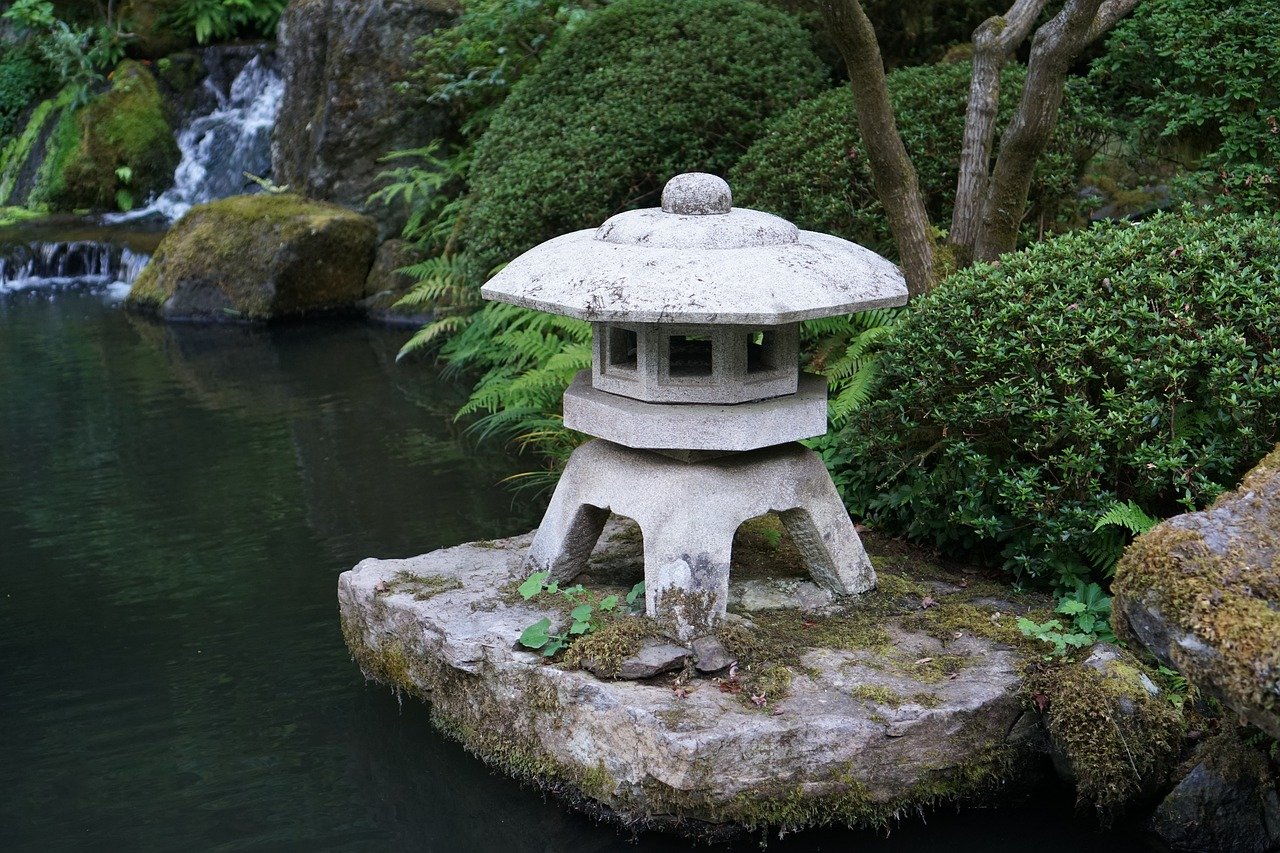
Design Ideas for Your Garden
When it comes to incorporating topiary into your garden, the possibilities are as limitless as your imagination! Imagine walking through your outdoor space, surrounded by beautiful, sculpted greenery that not only enhances the aesthetic but also creates a unique atmosphere. Whether you prefer a formal, structured look or a more playful, whimsical vibe, topiary can transform your garden into a stunning visual feast. Let's explore some creative design ideas that will help you make the most of your topiary creations.
One popular approach is to integrate topiary into formal gardens. This style is characterized by its meticulous attention to symmetry and order. Picture a perfectly manicured hedge surrounding a central fountain, with neatly shaped boxwood spheres or pyramids lining the pathways. This kind of layout not only draws the eye but also invites guests to stroll through the garden, taking in the elegance of your carefully crafted green sculptures. To achieve this look, consider using plants that can withstand regular trimming and shaping, such as yew or holly.
On the other hand, if you want to inject a sense of fun and creativity into your garden, whimsical topiary designs are the way to go! Think of topiary animals, spirals, or even abstract shapes that spark joy and curiosity. These playful designs can serve as focal points or conversation starters. Imagine a charming topiary elephant welcoming visitors at the entrance of your garden, or a series of spirals leading the way down a path. To create these imaginative forms, you may want to experiment with clipping techniques that allow for more intricate shapes. Using species like privet or myrtle can yield fantastic results, as they respond well to creative shaping.
Additionally, consider the seasonality of your topiary plants. While evergreens provide year-round structure and greenery, incorporating deciduous plants can add seasonal interest with their changing foliage. This mix not only keeps your garden lively throughout the year but also allows for a dynamic interplay of colors and textures. For instance, pairing evergreen topiary with flowering deciduous plants can create a stunning backdrop that changes with the seasons, offering a fresh perspective every few months.
Furthermore, don't overlook the potential of container gardening with topiary. This is particularly useful for those with limited space or for adding versatility to your design. You can create a stunning display by placing a topiary in a decorative pot, allowing you to move it around as needed. Consider using a variety of shapes and sizes to create a layered effect, or group several containers together for a more dramatic impact. This approach can also make it easier to manage plants that require different care, as you can bring them indoors during harsh weather conditions.
Finally, remember that lighting plays a crucial role in showcasing your topiary. Strategically placed garden lights can highlight your sculptures at night, casting enchanting shadows and creating a magical atmosphere. Solar-powered lights are an eco-friendly option that can illuminate your creations without adding to your energy bill. Imagine your beautifully shaped topiary glowing softly under the stars, inviting you to enjoy your garden even after the sun goes down.
- What is the best time to shape my topiary? It's best to shape your topiary during the active growing season, typically in late spring or early summer, when the plants are more resilient and can recover quickly from pruning.
- Can I use any plant for topiary? While many plants can be shaped into topiary, it's important to choose species that respond well to pruning and have a dense growth habit, such as boxwood, yew, or holly.
- How do I maintain the shape of my topiary? Regular pruning and trimming are essential to maintain the desired shape. Use sharp shears and follow the natural lines of the plant to encourage healthy growth and prevent over-pruning.
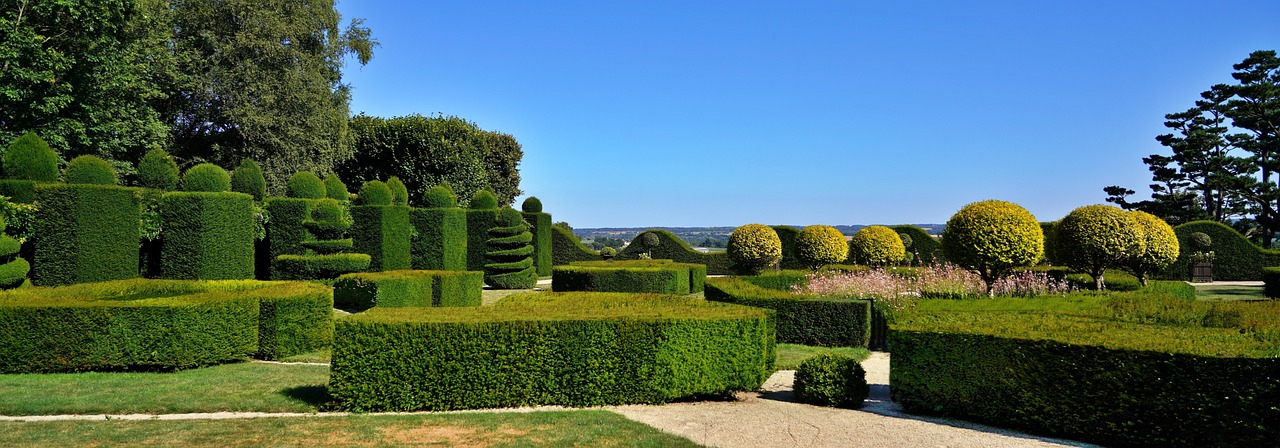
Topiary in Formal Gardens
When it comes to creating a stunning visual impact in your garden, stands out as an art form that marries structure with nature's beauty. Imagine walking through a garden where the plants are not just growing wild but are sculpted into elegant shapes that catch your eye and spark your imagination. Formal gardens often emphasize symmetry and order, and topiary provides the perfect way to achieve this. By using meticulously shaped plants, you can create pathways, focal points, and even living walls that guide visitors through your outdoor space.
One of the most captivating aspects of topiary in formal gardens is its ability to bring a sense of elegance and refinement to any landscape. Whether it’s a perfectly trimmed boxwood sphere or a towering spiral of yew, each piece of topiary serves as a testament to the gardener's skill and creativity. The key to integrating topiary into a formal garden lies in its placement and design. For instance, consider using topiary to frame entrances, accentuate corners, or create a stunning backdrop for colorful flower beds. This not only adds depth to your garden but also introduces a dynamic contrast between the structured greenery and the vibrant blooms.
In a formal garden, the choice of plants is crucial. Some of the most popular species for topiary include:
- Boxwood: Known for its dense foliage and ability to be shaped easily, boxwood is a classic choice for topiary.
- Yew: This evergreen is ideal for creating intricate designs due to its pliable branches.
- Holly: With its glossy leaves and bright berries, holly adds seasonal interest to topiary arrangements.
Moreover, the use of geometric shapes is a hallmark of formal gardens. You might find cubes, pyramids, and spirals that not only enhance the garden's symmetry but also serve as focal points that draw the eye. To elevate your design, consider varying the heights and sizes of your topiary pieces. This creates visual interest and can transform a flat landscape into a multi-dimensional space that feels alive and engaging.
Another important aspect of topiary in formal gardens is maintenance. Regular trimming and shaping are essential to keep your topiary looking its best. This requires a bit of commitment, but the rewards are well worth it. Imagine hosting a garden party where guests marvel at your perfectly manicured topiary, each piece telling a story of care and creativity. To assist in this endeavor, here’s a simple table outlining the maintenance schedule for common topiary plants:
| Plant Type | Trimming Frequency | Best Time to Trim |
|---|---|---|
| Boxwood | 2-3 times a year | Spring and late summer |
| Yew | Once a year | Late spring |
| Holly | 1-2 times a year | Early spring |
In summary, incorporating topiary into formal gardens is an excellent way to express creativity while maintaining a sense of order and elegance. By carefully selecting plants, designing with symmetry in mind, and committing to regular maintenance, you can create a stunning outdoor space that not only looks beautiful but also reflects your personal style. So, grab your shears, and let your imagination run wild as you sculpt your very own topiary masterpiece!
Q: What is the best time to start shaping topiary?
A: The best time to start shaping topiary is in the spring when new growth begins, allowing you to easily mold the plants into your desired shapes.
Q: Can I use any plant for topiary?
A: Not all plants are suitable for topiary. It's best to choose plants with dense foliage and a growth habit that allows for shaping, such as boxwood, yew, or holly.
Q: How do I maintain the shape of my topiary?
A: Regular trimming and shaping are essential. Depending on the plant type, you may need to trim 1-3 times a year to keep your topiary looking its best.
Q: Is topiary suitable for all climates?
A: While many plants used in topiary can thrive in various climates, it's important to choose species that are well-suited for your specific environment to ensure healthy growth.
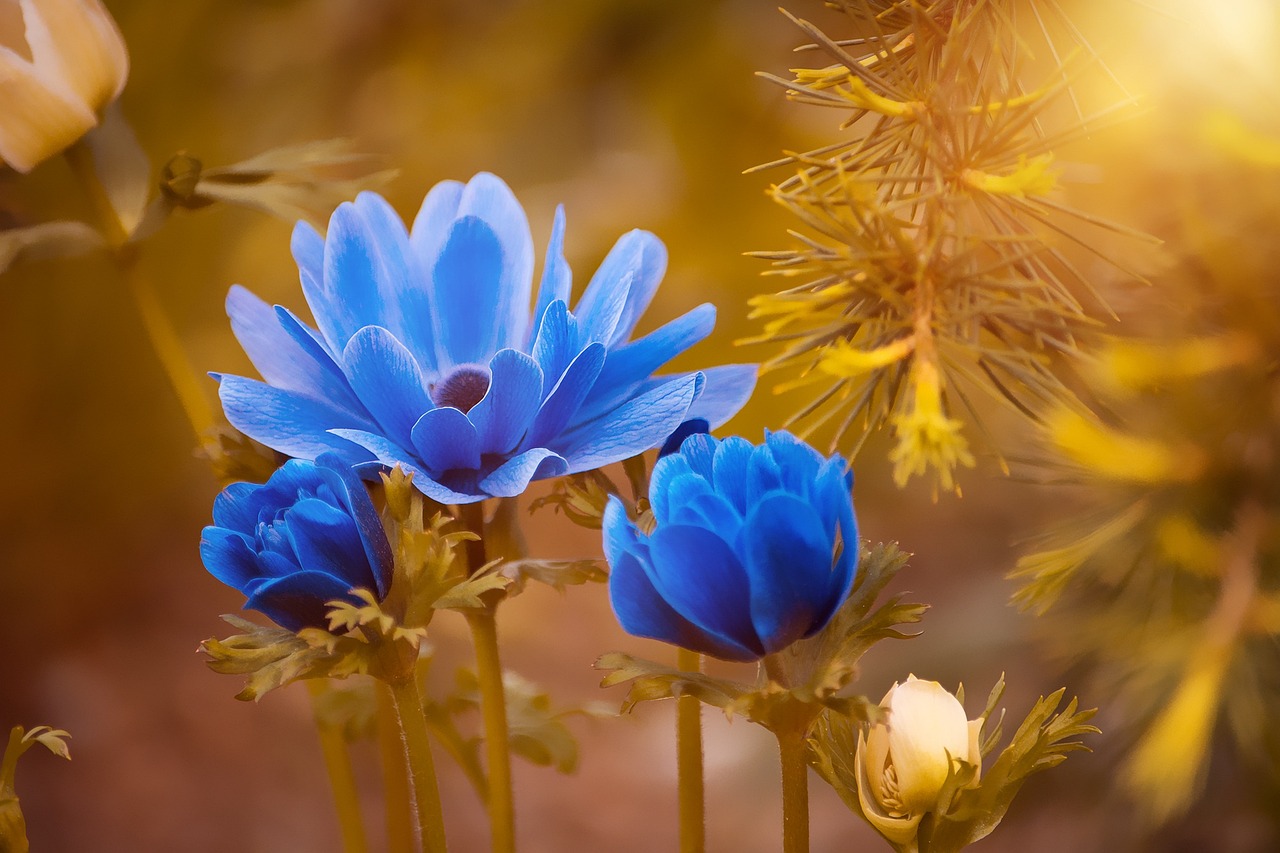
Whimsical Topiary Designs
When it comes to adding a touch of magic to your garden, can transform ordinary green spaces into enchanting landscapes. Imagine walking through your garden and encountering a giant rabbit, a dancing ballerina, or even a towering dragon, all sculpted from lush greenery. These imaginative shapes not only bring joy but also spark creativity and conversation among visitors. The key to successful whimsical topiary lies in your ability to think outside the box and let your imagination run wild.
One of the most delightful aspects of whimsical topiary is the freedom it offers in design. Unlike traditional topiary, which often focuses on geometric shapes and formal arrangements, whimsical topiary invites you to create playful forms that reflect your personality and style. You might consider using a variety of plants to achieve different textures and colors, enhancing the overall visual appeal. For instance, combining boxwood for structure with creeping thyme for a softer touch can create a stunning contrast that captivates the eye.
To get started on your whimsical topiary journey, you might want to brainstorm some ideas. Here are a few suggestions to inspire your creativity:
- Animal Shapes: Craft topiary in the forms of your favorite animals, from playful puppies to majestic elephants.
- Fantasy Creatures: Let your imagination soar by shaping mythical beings like unicorns or dragons.
- Everyday Objects: Create topiary that resembles everyday items, such as oversized teapots or whimsical umbrellas.
Once you have your ideas, it's essential to plan your garden layout. Consider the placement of your whimsical topiary in relation to existing plants, pathways, and outdoor seating areas. This will help create a cohesive and inviting atmosphere. Remember, the goal is to create a space that encourages exploration and wonder, so don't hesitate to incorporate elements like winding paths or hidden nooks where visitors can discover your creations.
Maintenance is another critical aspect of keeping your whimsical topiary looking its best. Regular pruning is necessary to maintain the desired shapes and prevent overgrowth. Additionally, be mindful of the plants' health by ensuring they receive adequate water and nutrients. A well-cared-for topiary will not only look stunning but will also stand the test of time, allowing you to enjoy your whimsical garden for years to come.
In conclusion, whimsical topiary designs offer a unique opportunity to express your creativity and bring a sense of joy to your outdoor spaces. By embracing playful shapes and imaginative concepts, you can create a garden that delights the senses and invites exploration. So grab your pruning shears, let your imagination run wild, and start crafting your own enchanting topiary sculptures today!
1. What types of plants are best for creating whimsical topiary?
While many plants can be used, boxwood, holly, and yew are popular choices due to their dense foliage and ability to hold shapes well. Consider the climate and soil conditions in your area when selecting plants.
2. How often should I prune my topiary?
Regular pruning is essential for maintaining the shape of your topiary. It's generally recommended to prune every 4-6 weeks during the growing season, depending on the growth rate of the plants.
3. Can I create whimsical topiary designs in containers?
Absolutely! Container gardening is a fantastic way to incorporate whimsical topiary into smaller spaces, such as patios or balconies. Just ensure the containers have good drainage and are large enough to accommodate the plant's root system.
4. What tools do I need for topiary maintenance?
Basic gardening tools like shears, pruners, and gloves are essential. For more intricate designs, consider investing in specialized topiary tools such as topiary frames and wire.
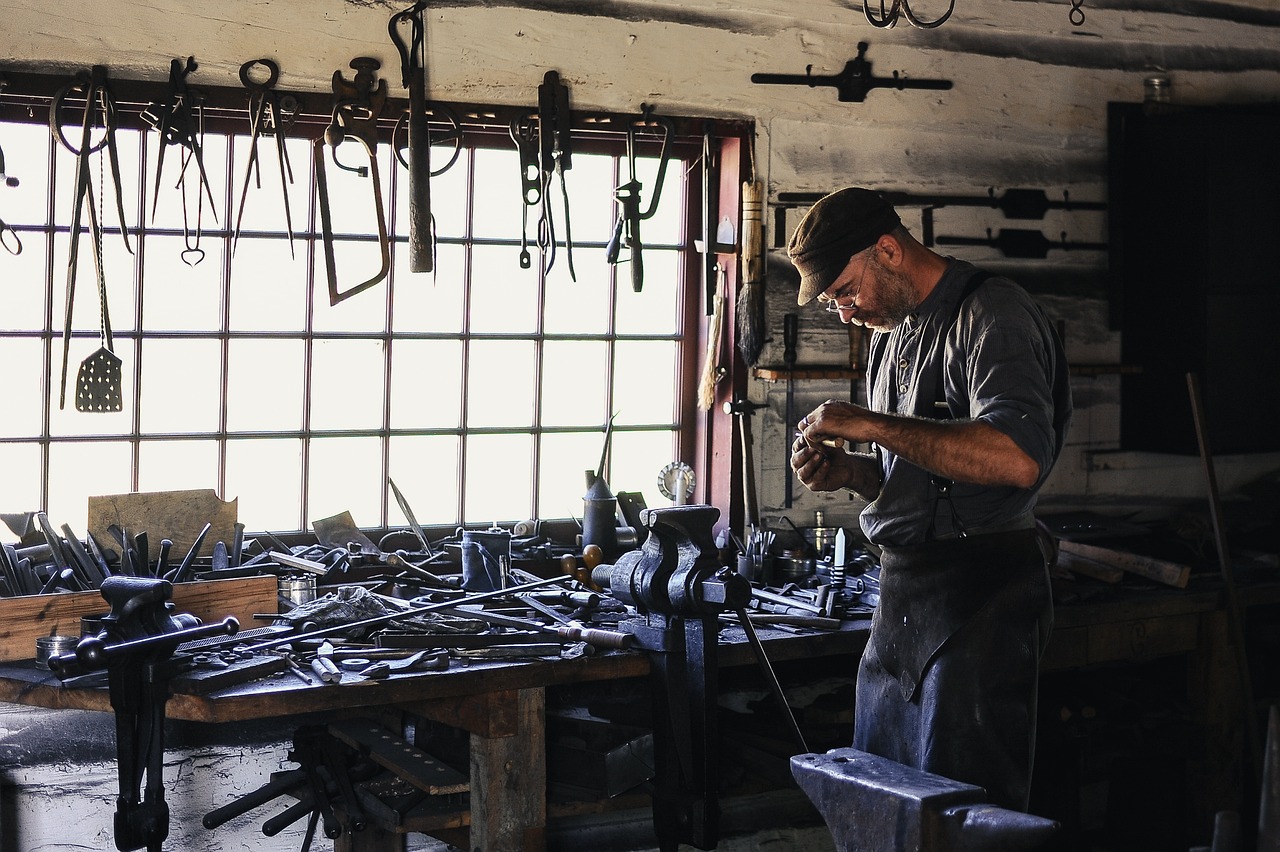
Tools and Equipment
When it comes to sculpting your garden with topiary, having the right tools and equipment is essential for achieving those stunning green masterpieces. Just like a painter needs brushes and a canvas, a topiary artist requires specific tools to bring their vision to life. Whether you’re a seasoned gardener or a complete novice, equipping yourself with the right gear will not only make your work easier but also enhance the quality of your topiary creations.
First and foremost, you'll need some basic gardening tools. These include shears, pruners, and gloves. Shears are perfect for larger cuts, allowing you to shape your plants more dramatically. Pruners, on the other hand, are ideal for more delicate work, giving you the precision needed for intricate designs. And let's not forget about gloves! They protect your hands from thorns and rough branches, making your gardening experience much more enjoyable.
In addition to these basics, you might want to consider investing in some specialized topiary tools. Topiary frames are particularly useful for creating specific shapes. These frames act as guides, helping you maintain uniformity as you trim your plants. Moreover, having some wire on hand will enable you to train your plants into desired forms. This technique is especially beneficial for beginners, as it provides a clear structure to follow while the plants grow.
To give you a clearer picture, here’s a quick comparison of basic and specialized tools:
| Tool Type | Purpose |
|---|---|
| Shears | For larger cuts and shaping |
| Pruners | For delicate and precise trimming |
| Gloves | To protect hands during gardening |
| Topiary Frames | To guide plant shapes |
| Wire | To train plants into desired forms |
Now, let’s talk about maintenance tools. Keeping your topiary in tip-top shape requires regular upkeep, and having the right tools can make this process much smoother. A garden rake is essential for clearing debris, while a watering can or hose will help you keep your plants hydrated. Additionally, a fertilizer spreader can aid in the even distribution of nutrients, ensuring your plants grow healthy and strong.
In conclusion, investing in the right tools and equipment is a fundamental step in your topiary journey. With the proper gear at your disposal, you’ll not only find the process more enjoyable but also produce more impressive results. Remember, every great artist needs their tools, and as you embark on this creative endeavor, let your tools be your trusted companions. So gear up, get your hands dirty, and let your imagination run wild as you transform your outdoor space into a breathtaking topiary garden!
Q: What are the most essential tools for beginners in topiary?
A: For beginners, the most essential tools include shears, pruners, and gloves. These will help you with basic shaping and maintenance of your plants.
Q: Can I use regular gardening tools for topiary?
A: Yes, regular gardening tools can be used for topiary, but specialized tools like topiary frames and wire can help you achieve more precise shapes and designs.
Q: How often should I prune my topiary plants?
A: The frequency of pruning depends on the plant species and your desired shape. Generally, regular trimming every few weeks during the growing season is recommended to maintain shape.
Q: Are there any tools I should avoid using for topiary?
A: Avoid using dull tools, as they can damage the plants. Additionally, steer clear of heavy equipment that may not provide the finesse needed for intricate designs.
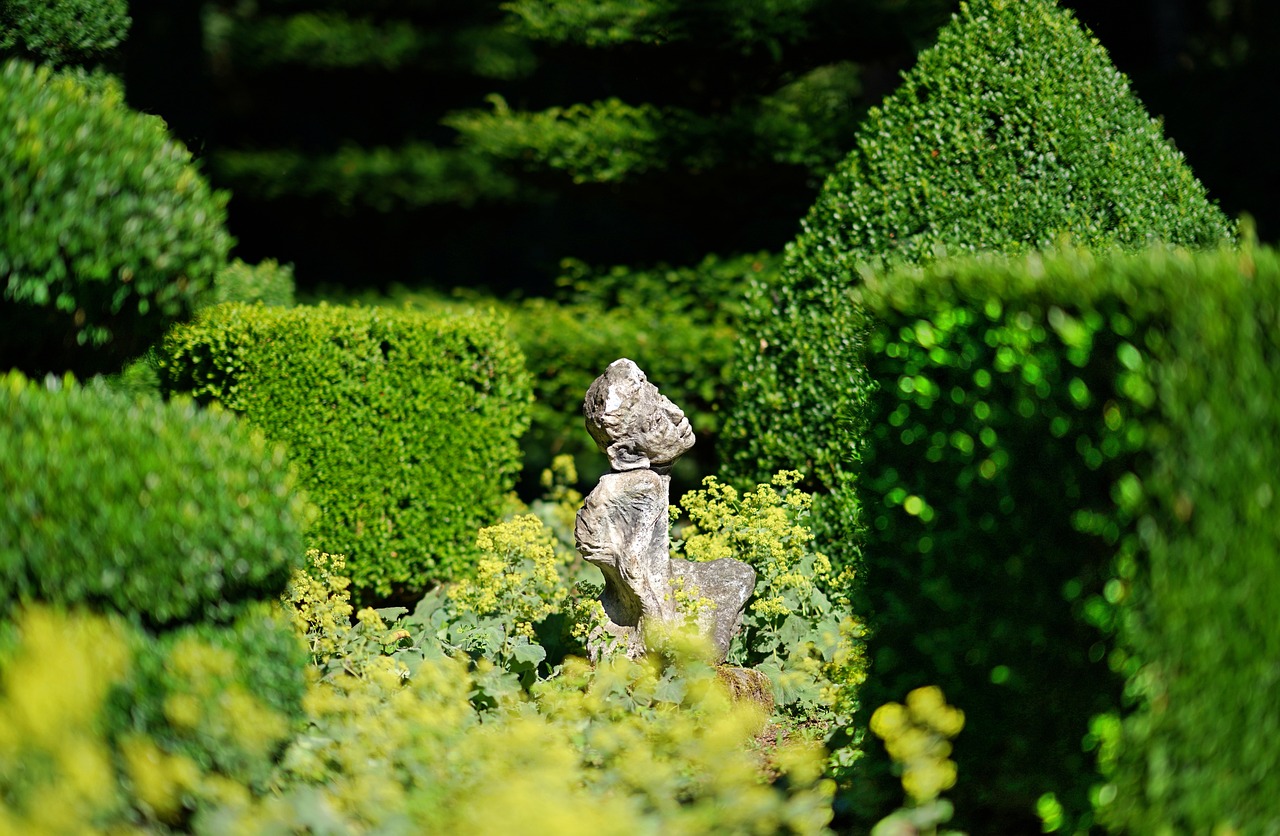
Basic Gardening Tools
When diving into the world of topiary, having the right gardening tools is essential for sculpting those beautiful green masterpieces. Think of your tools as the artist's brush; without them, creating stunning shapes becomes a daunting task. So, what should you have in your gardening arsenal? Let's explore the must-have tools that will make your topiary journey a breeze.
First and foremost, a good pair of shears is crucial. These are your go-to tools for trimming and shaping your plants. Look for shears that are comfortable to hold and have sharp blades, as this will make your cuts cleaner and reduce stress on the plants. A quality pair will allow you to create precise cuts, which is vital when forming intricate shapes. Additionally, consider investing in a pair of hand pruners for those smaller, more delicate tasks. They are perfect for snipping away at hard-to-reach areas or for detailed work on smaller plants.
Another essential tool is a set of gardening gloves. Trust me, you don't want to end up with sore hands or scrapes while working on your topiary sculptures. Gloves not only protect your hands but also provide a better grip when handling tools. Choose a pair that is durable yet flexible, allowing you to maintain dexterity while working.
For larger projects, a hedge trimmer can be a game-changer. These electric or manual tools can help you tackle bigger plants quickly and efficiently. However, be cautious with them; they can easily remove more than intended if not used carefully.
Lastly, consider having a ruler or a measuring tape handy. While it may seem like a simple tool, measuring your plants ensures that your designs are symmetrical and proportionate. In topiary, precision is key, and a little measurement can go a long way in achieving that perfect shape.
Here’s a quick overview of the basic gardening tools you'll need for topiary:
| Tool | Purpose |
|---|---|
| Shears | For trimming and shaping plants. |
| Hand Pruners | For detailed work and small cuts. |
| Gardening Gloves | To protect hands and improve grip. |
| Hedge Trimmer | For larger topiary projects. |
| Ruler/Measuring Tape | To ensure symmetry and proportions. |
With these tools in your gardening kit, you’ll be well-equipped to tackle any topiary project that comes your way. Remember, the right tools not only make your work easier but also enhance the quality of your creations. Happy sculpting!
Q: How often should I prune my topiary plants?
A: Pruning frequency depends on the plant species and growth rate, but generally, a good rule of thumb is to prune every 4-6 weeks during the growing season.
Q: Can I use any plant for topiary?
A: Not all plants are suitable for topiary. It's best to choose plants with dense foliage and a growth habit that can easily be shaped, such as boxwood or yew.
Q: What if I make a mistake while shaping?
A: Don’t worry! Mistakes are part of the learning process. You can always trim back and reshape as needed. Just be patient, and your plant will bounce back.
Q: Are there specific tools for beginners?
A: Yes, beginners should start with basic shears, hand pruners, and gloves. As you gain experience, you can expand your toolkit with more specialized tools.
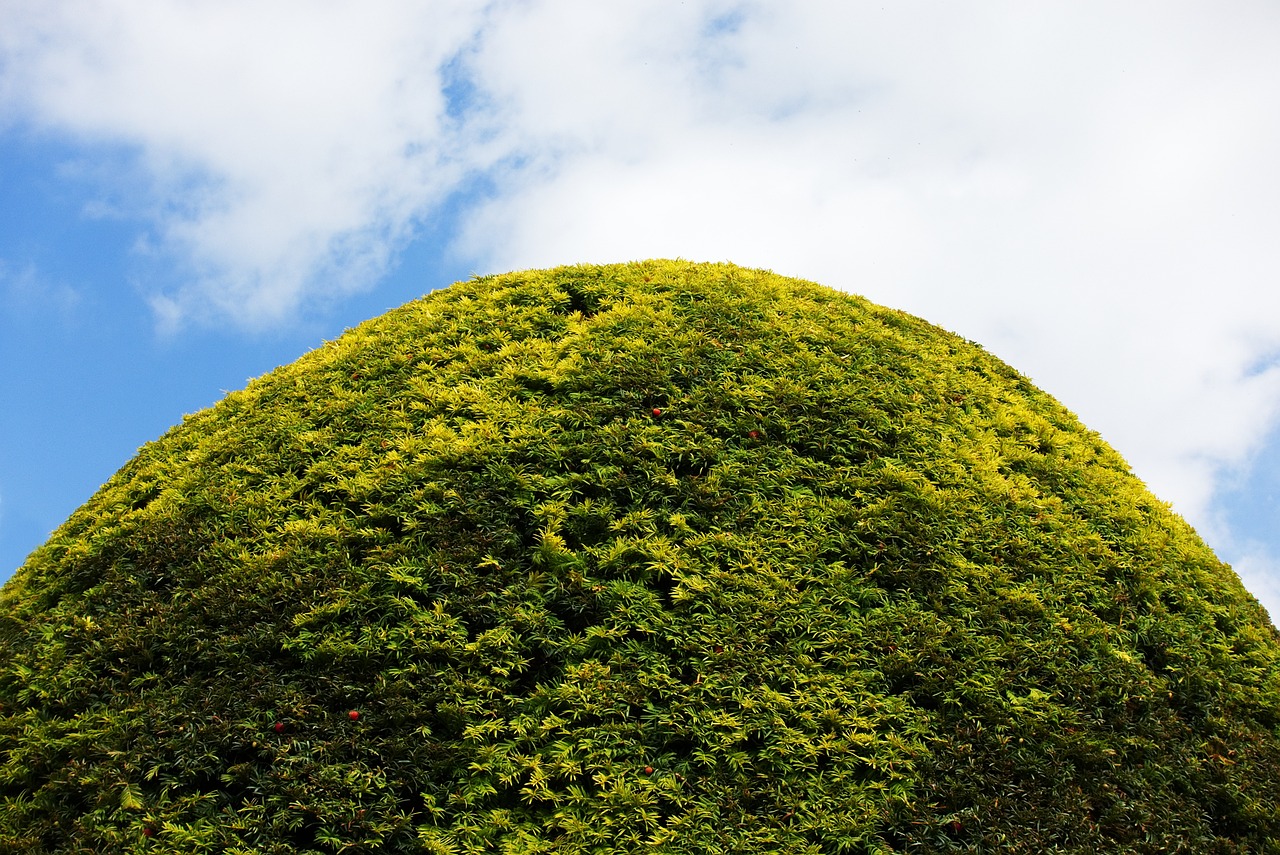
Specialized Topiary Tools
When it comes to creating stunning topiary sculptures, having the right tools can make all the difference. While basic gardening tools are essential, specialized topiary tools elevate your crafting experience and help you achieve those intricate designs that leave onlookers in awe. One of the most important specialized tools is the topiary frame. This frame provides a guide for shaping your plants into specific forms, ensuring that your artistic vision is realized as you trim and shape your greenery.
Another vital tool in your topiary arsenal is topiary wire. This flexible wire allows you to train your plants into desired positions, especially during the early growth stages. By wrapping the wire around branches, you can gently direct their growth, giving you more control over the final shape of your sculpture. It’s like having a trusted assistant who helps you mold your masterpiece without stunting the plant’s natural growth.
In addition to these, having a good pair of topiary shears is crucial. Unlike regular garden shears, topiary shears are designed with precision in mind, allowing you to make clean cuts that promote healthy growth. These shears often have a slightly curved blade, which helps in creating smooth lines and intricate details. For those looking to delve deeper into the art of topiary, investing in a set of precision pruning scissors can also be beneficial. These scissors allow you to tackle the finer details of your designs, ensuring that even the smallest leaves are perfectly shaped.
To help you understand the various specialized tools available, here’s a simple table summarizing some of the essential tools along with their purposes:
| Tool | Purpose |
|---|---|
| Topiary Frame | Guides the shaping of plants into specific forms. |
| Topiary Wire | Trains branches to grow in desired directions. |
| Topiary Shears | Makes precise cuts for clean lines and details. |
| Precision Pruning Scissors | Handles intricate details and fine shaping. |
Lastly, don’t forget about gardening gloves. While they may seem basic, a good pair protects your hands from thorns and rough branches, allowing you to work comfortably and efficiently. With the right tools in hand, you’ll find that creating topiary art is not just a task, but a delightful journey into the world of gardening. So, gear up, get creative, and let your imagination run wild as you sculpt your very own green masterpieces!
- What is the best time to prune my topiary plants? It's best to prune during the growing season, typically in spring or early summer, to encourage healthy growth.
- Can I use regular garden tools for topiary? While you can, specialized tools are recommended for better precision and results.
- How often should I water my topiary plants? Watering frequency depends on the plant type and climate, but generally, keep the soil moist but not soggy.

Common Mistakes to Avoid
When diving into the art of topiary, it can be easy to make a few missteps along the way. After all, sculpting plants into stunning shapes requires a blend of creativity and technique. One of the most common pitfalls is over-pruning. While it might seem tempting to snip away at your plants to achieve that perfect form, excessive pruning can lead to stunted growth and unsightly shapes. Imagine trying to sculpt a masterpiece only to find that your materials have become too fragile to hold their form! To avoid this, it’s crucial to prune judiciously, allowing your plants to maintain their vigor while still shaping them to your desired design.
Another frequent mistake is choosing the wrong plants. Selecting the right species for your climate and design goals is essential for success. For instance, if you live in a region with harsh winters and choose a plant that isn’t hardy enough, you might find your topiary dreams dashed come spring. Instead, take the time to research and choose plants that will thrive in your environment. A few excellent choices for beginners include boxwood, yew, and holly, as these species are not only resilient but also lend themselves beautifully to shaping.
Additionally, many beginners overlook the importance of proper spacing when planting their topiary. If your plants are too close together, they will compete for nutrients and sunlight, leading to weak growth and a less-than-ideal sculpture. On the other hand, if they're spaced too far apart, you might end up with awkward gaps in your design. Aim for a balance by following recommended spacing guidelines based on the specific plants you choose. This way, your topiary can flourish and achieve its full potential.
Watering and fertilization practices are also critical. Overwatering can be just as detrimental as underwatering. It's like trying to fill a cup that already has too much water; it spills over and creates a mess. Make sure to familiarize yourself with the watering needs of your specific plants and adjust your routine accordingly. Similarly, fertilization should be done thoughtfully. Too much fertilizer can lead to excessive growth and weak branches that can't support your desired shapes. A little goes a long way, so always follow the recommended guidelines.
Lastly, don’t forget to enjoy the process! Many gardeners become so focused on achieving a perfect topiary that they forget to appreciate the beauty of the journey. Take time to admire your work, learn from any mistakes, and celebrate your successes. Remember, gardening is a living art form—embrace the imperfections, and let your creativity shine!
- What is the best time to prune my topiary?
The best time to prune topiary is in late spring or early summer when the plants are actively growing. This allows for quick recovery and healthy new growth. - How often should I water my topiary plants?
Watering frequency depends on your climate and the specific plants you choose, but generally, you should aim to keep the soil consistently moist without over-saturating it. - Can I use any plant for topiary?
Not all plants are suitable for topiary. Look for species that can handle pruning and shaping, such as boxwood, yew, and holly, which are popular choices. - What tools do I need for topiary?
Basic tools include pruning shears, gloves, and possibly specialized topiary tools like frames or wires for more intricate designs.

Over-Pruning Issues
When it comes to topiary, one of the most common mistakes that beginners encounter is over-pruning. This issue can lead to a series of detrimental effects that not only harm the plants but also ruin the aesthetic appeal of your carefully sculpted green art. Over-pruning occurs when gardeners become overly enthusiastic, trimming away too much foliage in an attempt to achieve their desired shape too quickly. It's essential to recognize that plants, much like people, need time to grow and develop their full potential.
One of the primary consequences of over-pruning is stunted growth. When you remove too much of the plant at once, you can shock it, leading to a halt in growth or even a decline in health. This is particularly true for young plants that are still establishing their root systems. Instead of a lush, vibrant topiary, you may find yourself with a sparse, unhealthy specimen that barely resembles the design you envisioned. Plants need their leaves to photosynthesize, and removing too many can severely limit their ability to produce energy.
Moreover, over-pruning can result in unsightly shapes. If you cut away too much at once, you may inadvertently create gaps or uneven areas in your topiary. These imperfections can be challenging to fix, and it may take years for the plant to fill in those gaps naturally. Imagine sculpting a beautiful statue only to find that a chunk of it is missing—frustrating, right? The same applies to your topiary; it’s all about patience and precision.
To avoid the pitfalls of over-pruning, consider the following tips:
- Prune gradually: Instead of attempting to achieve your desired shape in one go, take your time. Trim a little bit at a time, allowing the plant to adjust and fill in the gaps.
- Know your plant: Different species have varying growth rates and responses to pruning. Familiarize yourself with the specific needs of the plants you are working with.
- Use sharp tools: Dull tools can lead to jagged cuts, further stressing the plant. Ensure your shears and clippers are well-maintained for clean cuts.
In summary, while the desire to create a stunning topiary is admirable, it's crucial to approach pruning with caution and respect for the plant's natural growth cycle. By avoiding over-pruning, you’ll not only maintain the health of your plants but also achieve the beautiful, intricate designs you aspire to create. Remember, patience is key in the art of topiary, and with time, your green sculptures will flourish into magnificent works of art.
Q: What is the best time to prune topiary plants?
A: The best time to prune topiary plants is typically in late spring or early summer when they are actively growing. This allows for quick recovery and new growth.
Q: How often should I prune my topiary?
A: It depends on the plant species and the desired shape. Generally, light pruning every few weeks during the growing season is sufficient, while more significant shaping can be done once or twice a year.
Q: Can I use any type of plant for topiary?
A: Not all plants are suitable for topiary. Look for species that have dense foliage and respond well to pruning, such as boxwood, yew, and holly.
Q: What should I do if I accidentally over-prune my topiary?
A: If you've over-pruned, give your plant some time to recover. Ensure it receives adequate water and nutrients, and avoid further pruning until it regains its strength.

Choosing the Wrong Plants
When it comes to topiary, the choice of plants can make or break your sculpting aspirations. Imagine investing time and energy into crafting a beautiful green sculpture, only to find out that the plant you chose is ill-suited for your climate or requires maintenance that you simply can't commit to. This scenario is more common than you might think, and avoiding it is crucial for any budding topiary artist.
One of the biggest mistakes is selecting plants that aren't compatible with your local environment. For instance, if you live in a region that experiences extreme heat or cold, opting for delicate plants that thrive in milder conditions can lead to disappointment. It's essential to consider factors such as hardiness zones, soil type, and moisture levels before making your selection. A plant that looks perfect in the nursery may not survive the first frost or summer drought in your garden.
Moreover, understanding the growth habits of potential topiary plants is equally important. Some species, like boxwood, are popular for their dense foliage and ability to be shaped easily. However, if you choose a fast-growing plant without considering its eventual size, you may end up with a topiary that quickly outgrows its intended form. This can lead to a chaotic garden space rather than the serene, structured design you envisioned.
To help you navigate the complexities of plant selection, consider the following key points:
- Research Local Climate: Always check your hardiness zone and choose plants that can withstand your local weather conditions.
- Growth Patterns: Understand how the plant grows and whether it will maintain its shape over time.
- Maintenance Requirements: Some plants may require more care than you can provide; choose those that fit your gardening style.
Another common pitfall is the selection of plants that are prone to pests or diseases. These plants can become a headache and may even affect the health of surrounding plants. For instance, if you choose a type of holly that is susceptible to leaf spot, you could find yourself dealing with unsightly foliage that detracts from your topiary's beauty. Always opt for disease-resistant varieties whenever possible.
In conclusion, selecting the right plants for your topiary endeavors is not just about aesthetics; it’s about creating a sustainable and manageable garden. By taking the time to research and choose wisely, you can avoid the frustration of choosing the wrong plants and instead enjoy the rewarding experience of sculpting your very own green masterpieces.
- What are the best plants for topiary? Popular choices include boxwood, yew, and holly due to their dense foliage and adaptability to shaping.
- How do I know if a plant is suitable for my climate? Check your USDA hardiness zone and choose plants that are rated for your specific zone.
- Can I use flowering plants for topiary? While it’s possible, flowering plants may require more maintenance and could detract from the sculptural aspect of topiary.
- How often should I prune my topiary plants? Regular pruning is essential; typically, you should prune every few weeks during the growing season to maintain shape.

Inspirational Topiary Gardens
Topiary gardens are like living art galleries, showcasing the incredible creativity and skill of gardeners who transform ordinary plants into breathtaking sculptures. These gardens not only captivate the eye but also inspire those who aspire to create their own green masterpieces. From the meticulously manicured hedges of formal gardens to the playful shapes found in whimsical landscapes, there is a topiary garden for every taste and style.
One of the most famous topiary gardens is the National Trust's Topiary Garden in England. This stunning location features intricately shaped plants that tell stories through their designs. Visitors can wander through a maze of greenery, marveling at everything from geometric forms to fantastical creatures. The artistry displayed here is a testament to the dedication and passion of topiary artists over the years.
Another remarkable example is the Green Animals Topiary Garden in Rhode Island, USA. This garden is home to over 80 unique topiary sculptures, including animals, geometric shapes, and even a topiary train! The vibrant colors and whimsical designs create a magical atmosphere that feels like stepping into a fairy tale. It's a perfect destination for families and garden enthusiasts alike, offering a delightful experience for all ages.
For those looking to explore local talent, many communities host topiary exhibits and events, providing a platform for local artists to showcase their work. These events often feature competitions, workshops, and guided tours, allowing visitors to learn about the techniques behind topiary art and gain inspiration for their own gardens. Attending such events can be a fantastic way to connect with fellow gardening enthusiasts and discover new ideas.
In addition to visiting these gardens, you can also take inspiration from the topiary designs you see in popular culture. Movies, television shows, and even literature have featured enchanting topiary scenes that can ignite your imagination. Think about how you can incorporate similar elements into your own outdoor space, whether it’s through creating your own sculptures or simply using topiary as a focal point in your garden design.
As you explore the world of topiary, remember that inspiration can come from anywhere. Whether it’s a grand garden filled with intricate designs or a simple, well-maintained shrub shaped into a delightful form, the beauty of topiary lies in its ability to transform the ordinary into the extraordinary. So, grab your shears, unleash your creativity, and start sculpting your own green masterpieces!
- What is topiary? Topiary is the art of shaping plants into decorative forms, often resembling animals, geometric shapes, or other artistic designs.
- What types of plants are best for topiary? Common plants for topiary include boxwood, holly, and yew, as they respond well to pruning and shaping.
- How do I maintain my topiary sculptures? Regular pruning, proper watering, and fertilization are essential for maintaining healthy topiary plants.
- Can I create topiary in my own garden? Absolutely! With the right plants and techniques, anyone can create stunning topiary designs in their garden.

Famous Topiary Gardens
Topiary gardens have long captivated the imagination of both gardeners and visitors alike, showcasing the incredible artistry and creativity that can be achieved with living plants. One of the most renowned examples is the National Trust's Topiary Gardens located in the picturesque countryside of England. These gardens are not just a feast for the eyes; they are a testament to the skill and dedication of the gardeners who have meticulously shaped each plant into stunning sculptures that tell a story. The intricate designs often include animals, geometric shapes, and even whimsical characters that evoke a sense of wonder and nostalgia.
Another iconic destination is the Levens Hall Topiary Garden, which is considered one of the oldest topiary gardens in the world. Dating back to the 17th century, this garden features over 100 carefully shaped yew trees, each one a work of art in its own right. Visitors can stroll through the garden's paths, marveling at the stunning forms that have been preserved and nurtured for centuries. The combination of history and artistry makes Levens Hall a must-visit for any topiary enthusiast.
In the United States, the Boxwood Garden at the Virginia Historical Society stands out as a prime example of American topiary. This garden features a collection of boxwood sculptures that have been shaped into elegant forms, providing a glimpse into the historical significance of topiary in American landscaping. The garden not only serves as a beautiful outdoor space but also as an educational resource, teaching visitors about the art and history of topiary in the context of American culture.
For those seeking a more whimsical experience, the Topiary Park in Columbus, Ohio offers a unique twist on traditional topiary. This park features a collection of topiary sculptures that recreate famous paintings, transforming the landscape into a living gallery. As you wander through the park, you can spot familiar scenes from art history, cleverly crafted from living greenery. This playful approach to topiary not only enhances the visual experience but also engages visitors in a conversation about art and nature.
Each of these gardens showcases the incredible versatility of topiary and its ability to blend artistry with nature. Whether you're drawn to the historical significance of Levens Hall, the educational aspects of the Virginia Historical Society, or the playful creativity of Topiary Park, there is something for everyone to enjoy. So, if you ever find yourself near one of these famous topiary gardens, take the time to explore and appreciate the beauty and craftsmanship that goes into creating these living sculptures.
- What is topiary? Topiary is the art of shaping plants into decorative forms, often resembling animals or geometric shapes.
- Which plants are best for topiary? Common choices include boxwood, holly, and yew due to their dense foliage and ability to hold shapes well.
- How do I maintain my topiary? Regular pruning, proper watering, and fertilization are essential for maintaining healthy topiary plants.
- Can I create topiary in my garden? Absolutely! With the right plants and techniques, anyone can create beautiful topiary sculptures in their own garden.
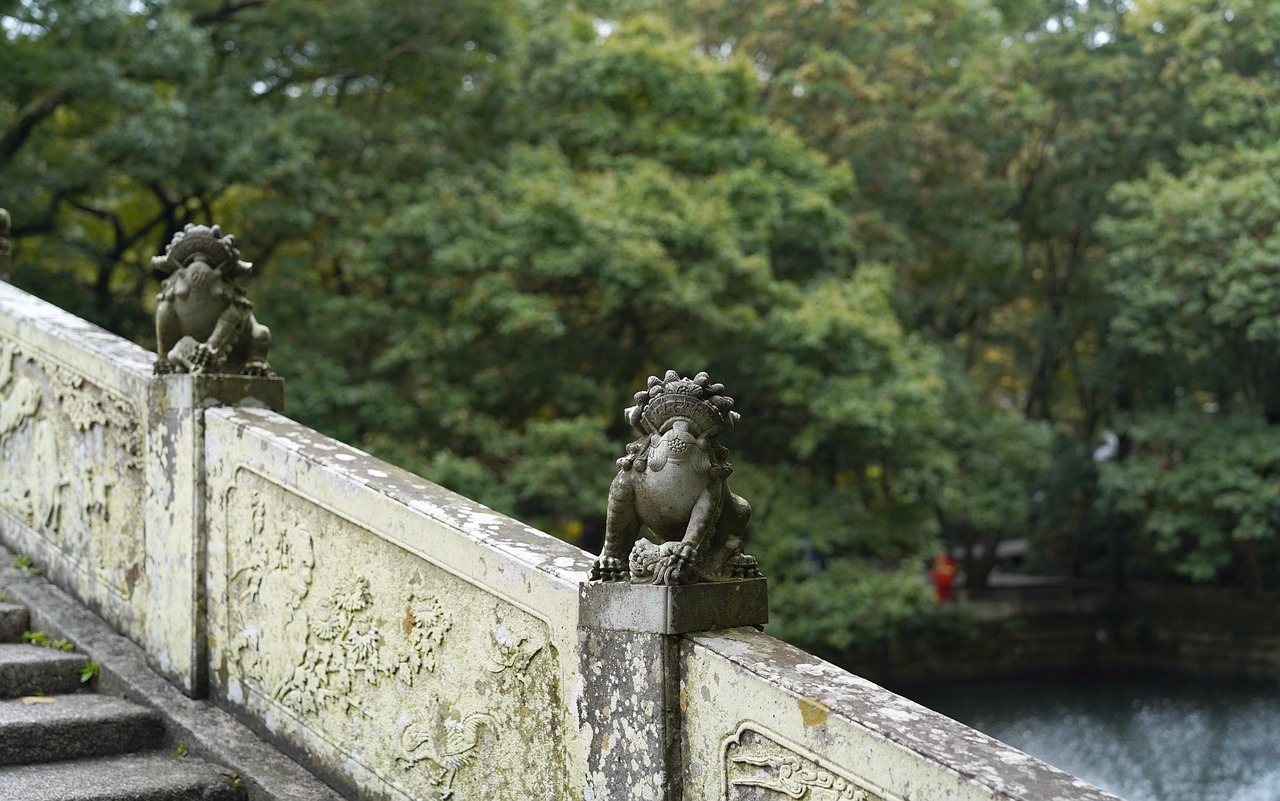
Local Topiary Exhibits
Visiting local topiary exhibits is like stepping into a living gallery where nature and artistry intertwine. These exhibits showcase the incredible versatility of topiary, allowing you to see firsthand how plants can be transformed into stunning sculptures. Whether you're a seasoned gardener or just starting your journey into the world of topiary, these exhibits can provide a wealth of inspiration and practical knowledge.
Many botanical gardens and local parks host seasonal topiary displays, featuring a variety of designs ranging from traditional geometric shapes to whimsical animal figures. For instance, the Topiary Park in Columbus, Ohio, is famous for its intricate designs that replicate the landscape of Georges Seurat's painting, "A Sunday Afternoon on the Island of La Grande Jatte." Such exhibits not only highlight the beauty of topiary but also offer a glimpse into the creativity and skill involved in this unique art form.
In addition to established gardens, many community events and festivals celebrate topiary. These gatherings often include workshops where you can learn from experienced topiary artists, giving you the chance to try your hand at shaping plants under expert guidance. Imagine learning the secrets of topiary while surrounded by beautifully crafted sculptures; it’s an experience that can ignite your passion for gardening!
If you're interested in exploring local topiary exhibits, consider checking out the following:
- Local Botanical Gardens: Many have dedicated sections for topiary and often change their displays seasonally.
- Community Festivals: These events frequently feature topiary competitions and workshops.
- Art Installations: Some cities incorporate topiary into public art displays, blending nature with urban landscapes.
As you visit these exhibits, take the time to observe the different techniques used in shaping and maintaining the plants. You might find inspiration for your own garden or even discover new plant varieties that you hadn't considered before. Plus, chatting with fellow enthusiasts can lead to invaluable tips and tricks that can enhance your topiary skills.
In conclusion, local topiary exhibits are not just visual feasts; they are also educational experiences that can deepen your appreciation for this artistic gardening technique. So, grab your gardening gloves and a notebook, and get ready to explore the magical world of topiary!
Q: What is topiary?
A: Topiary is the art of shaping plants into decorative forms, often resembling animals, geometric shapes, or other intricate designs.
Q: What types of plants are best for topiary?
A: Common plants for topiary include boxwood, holly, and yew due to their dense foliage and ability to withstand pruning.
Q: How often should I prune my topiary plants?
A: Pruning frequency depends on the plant species and the desired shape, but generally, regular maintenance every few months is recommended.
Q: Can I create topiary in pots?
A: Yes! Many gardeners create topiary in containers, which can be a great way to add vertical interest to patios or balconies.
Q: Are there any topiary competitions I can enter?
A: Many gardening clubs and community events host topiary competitions. Check local gardening organizations for upcoming events!
Frequently Asked Questions
- What is topiary?
Topiary is the art of shaping plants into ornamental shapes and sculptures. It involves trimming and training plants, usually evergreen varieties, to create intricate designs that can range from geometric forms to whimsical figures.
- Which plants are best for topiary?
Some of the best plants for topiary include boxwood, holly, and yew. These species are favored for their dense foliage and ability to withstand frequent pruning, making them ideal for creating detailed shapes.
- How do I care for my topiary plants?
Caring for topiary plants involves regular watering, fertilization, and pruning. It's important to ensure they have well-draining soil and to monitor their growth, trimming them as needed to maintain their desired shape.
- What tools do I need for topiary?
Essential tools for topiary include shears, pruners, gloves, and occasionally, specialized tools like topiary frames and wire to help you achieve precise shapes and maintain your designs.
- Can I use native plants for topiary?
Absolutely! Using native plants for topiary not only enhances local biodiversity but also allows you to create unique shapes that blend seamlessly into your garden's ecosystem.
- What are common mistakes to avoid in topiary?
Common mistakes include over-pruning, which can lead to stunted growth, and choosing inappropriate plants for your climate. It's crucial to research and plan before diving into your topiary projects.
- How can I incorporate topiary into my garden design?
You can incorporate topiary into your garden design by creating formal hedges for structured layouts or using whimsical shapes to add a playful touch. The key is to balance your topiary with other garden elements for a cohesive look.
- Are there famous topiary gardens I can visit?
Yes! Renowned topiary gardens, like those maintained by the National Trust in England, showcase stunning designs and intricate sculptures. Visiting these gardens can provide inspiration and insight into the art of topiary.



















